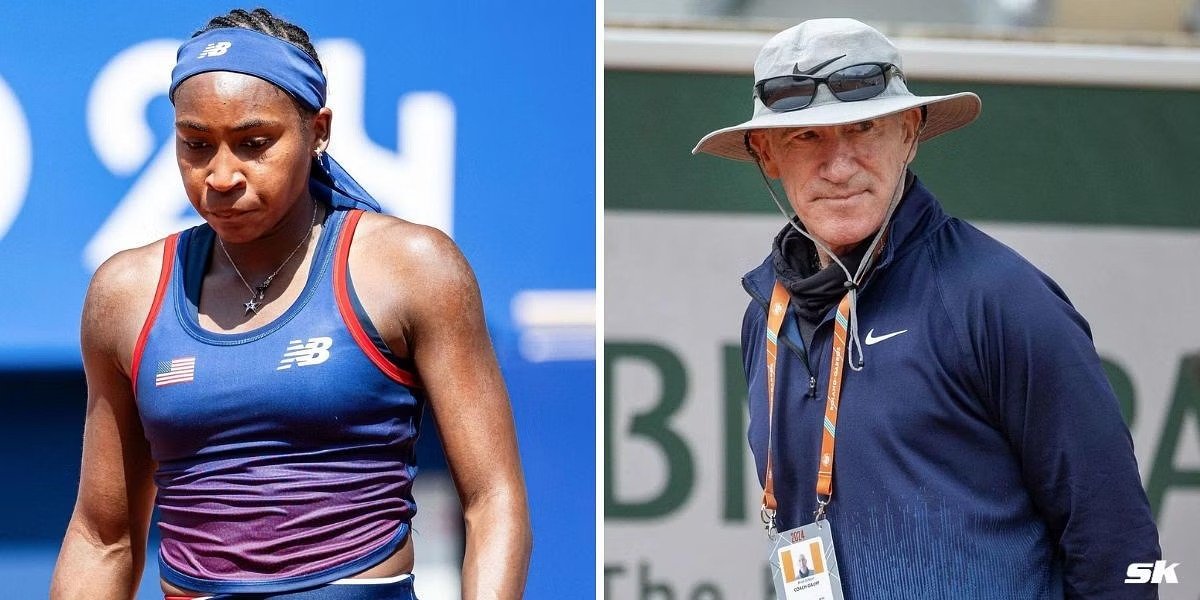
Coco Gauff, the American tennis sensation, has been at the center of controversy following a heated argument with an umpire during a match at the Paris Olympics. This incident has sparked discussions about the use of technology in tennis, particularly the idea of “incidental replays.”

### The Incident
During her match, Gauff became embroiled in a dispute with the umpire over a questionable call. The disagreement escalated, causing a noticeable disruption in the flow of the match. The argument revolved around a close line call that Gauff believed was incorrect.
This led to a prolonged exchange with the umpire, which not only affected Gauff’s concentration but also the overall atmosphere of the match.
### Brad Gilbert’s Advocacy
Brad Gilbert, Gauff’s coach and a prominent figure in the tennis world, has been vocal about the need for incorporating more technology into tennis officiating.
Gilbert’s stance is that the current system, which relies heavily on human judgment, is prone to errors that can significantly impact the outcome of matches. Following the incident in Paris, Gilbert reiterated his call for the introduction of “incidental replays.”
### What are Incidental Replays?
Incidental replays refer to the use of video technology to review and potentially overturn disputed calls during a match.
This concept is not entirely new to sports; it has been successfully implemented in other sports like football (soccer), basketball, and cricket. In tennis, the Hawk-Eye system is already used to challenge line calls, but its scope is limited.
### Arguments in Favor
1. **Accuracy and Fairness**: Proponents argue that incidental replays would enhance the accuracy of calls, ensuring fairer outcomes. In a sport where matches can be decided by a single point, the precision of calls is paramount.
2. **Reduction of Controversies**: By allowing players and officials to review contentious calls, the number of on-court disputes could be reduced. This would lead to a more respectful and professional environment during matches.
3. **Technological Feasibility**: With advancements in technology, implementing incidental replays in tennis is more feasible than ever. High-definition cameras and real-time processing can provide clear and immediate feedback on disputed points.
### Arguments Against
1. **Disruption of Play**: Critics argue that frequent use of replays could disrupt the flow of the game. Tennis is a sport that values rhythm and continuity, and stopping play for reviews could be detrimental to both players and spectators.
2. **Limited Scope of Challenges**: Currently, players are allotted a limited number of challenges per set. Introducing incidental replays could complicate this system, requiring a rethink of how and when players can request reviews.
3. **Human Element**: Some purists believe that the human element is an intrinsic part of sports. Mistakes by players, coaches, and officials add to the drama and unpredictability of the game.
### The Future of Tennis Officiating
The debate over incidental replays is part of a broader discussion about the role of technology in sports. As tennis continues to evolve, the balance between human judgment and technological assistance will be crucial.
The incident involving Coco Gauff at the Paris Olympics has reignited this conversation, with influential voices like Brad Gilbert advocating for change.
### Conclusion
While the introduction of incidental replays in tennis is a contentious issue, it is clear that there is a growing demand for more accurate and fair officiating.
The incident with Coco Gauff and her subsequent support from Brad Gilbert highlights the potential benefits of such a system.
As the tennis community debates this topic, it will be important to consider both the technological possibilities and the traditional aspects of the sport that make it unique.
Leave a Reply